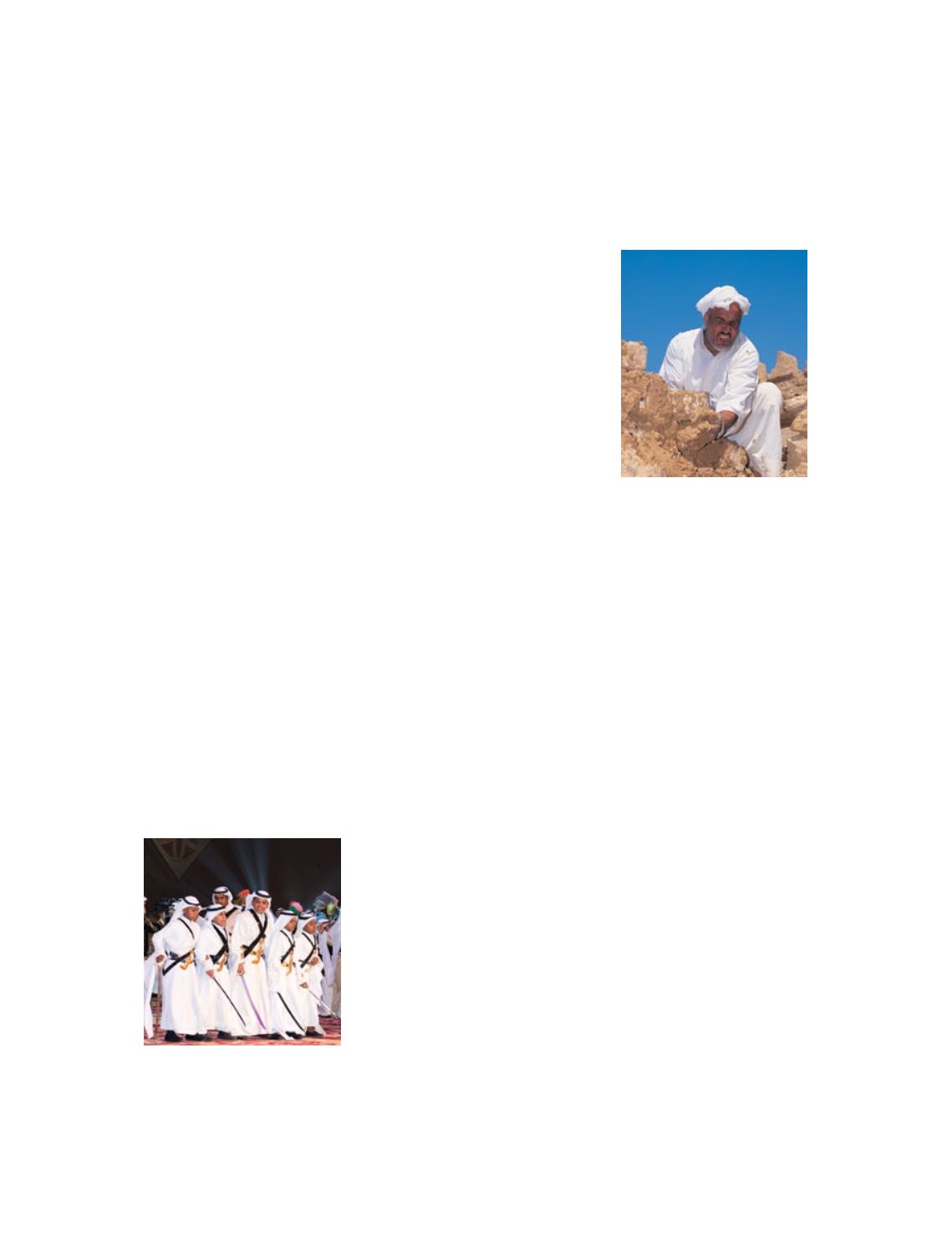

24
R
iyadh is a city with a contemporary face that rejuvenates and gets a
facelift overnight, studdedwith the traces of the ancient past, rich in
languages andethnicities fromall cornersof theglobe set inan intimateArabic
ambiance - amiscellany of social tastes and a contemporary urban lifemarked
andunifiedbyacultural azimuthandtranquilityofbehaviour.
ThejuxtapositionthatRiyadhlivesthrough,thatis,betweentheancient
and the modern, the originality and the modernity, the private and the
universal,makesitacityofheritageinacontemporarymould,redolentwith
themixedscentsoforiginalityandhistory.
ThecornerstonetoRiyadh’sauthenticityisitsinhabitants,forurbanism,
events and activities are nothing but assorted demonstrations and features
of an intellectual originality and upbringing. Values that colour the ethos
of the society in its engagement in contemporary business pursuits,
advancementofmodernappliedandtheoretical sciences, the tell-talesignsofwell-beingandupright livingwhich
arevisible inthebuildings, restaurants andactivities.
These values which guided the lifestyle of the community had a great role in the sustained prosperity
of cultural and educational activities for which Riyadh was famous in the past and continue to drive
forwardmanyof themanifestationsofmodernculture and thought.Despite the frenetic rhythmof life in
Riyadh, its inhabitants still findtime toenjoycultural andsocial events suchas JanadriyahFestival andthe
celebrationsofEidAl-Fitr, the festivalmarking theendof themonthofRamadan.
Riyadh’sheritagearchitecture isanembodimentof itscultural andsocialdistinctness.TheoldimageofRiyadh
was formed frommud houses of uniform architectural model that combines the design of the usual old Islamic
cities, surroundedbyhighwalls toppedwithtowers andbehindthewalls are surroundedbygreenpalmgroves.
To a large extent the features of this unique architectural identity have been obliterated with the onslaught
of the urbanization that Riyadh has experienced over the past decades. Some prominent monuments and
neighbourhoods in themiddle of the cityhave survived andwith the passage of time these have acquired a highly
symbolicvalue, in termsof their architectural, historical and sentimental value as tangible andconcrete remnants
of historical Riyadh. Al–Masmak Citadel and the Government Palace (Qasr
al-Hukm) evoke the early foundationandunification stages of theKingdom,
while Al–Murabba’ Palace and the historical structures of King Abdulaziz
Historical Centre are symbols of the Kingdom’s subsequent administrative
andurbanconstructionstages.
The urban regeneration and development of the city’s archaeological
monuments have made them into cultural institutions that the public can
relate to, andcontribute tothecultural identityof futuregenerations. These
ancient buildings have also played a key role as a source of inspiration for
modernarchitects,withthe result thatnewbuildings inboththeprivateand
public sector have design elements which clearly are drawn from the city’s
heritage architecture. In this way Riyadh is constantly regenerating and
reinforcing itsownuniquearchitectural identityandheritage.
















